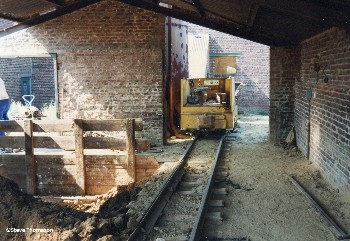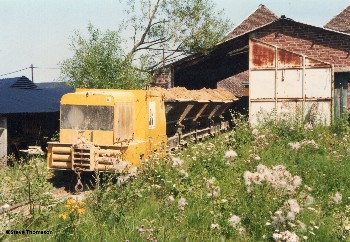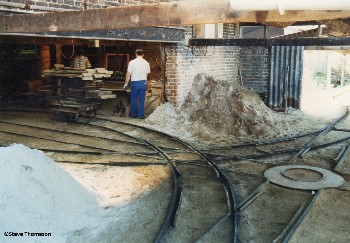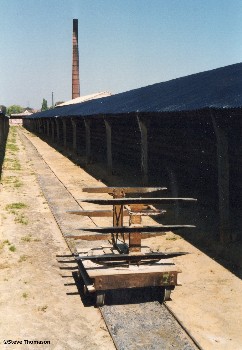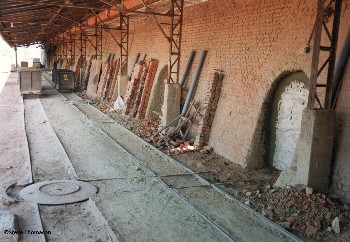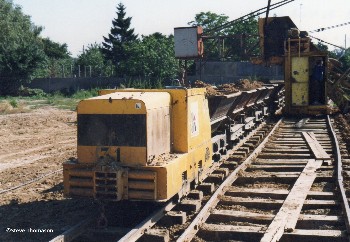
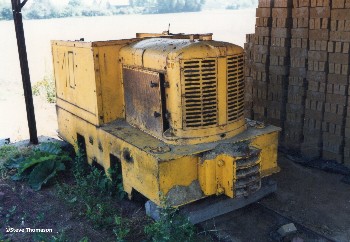
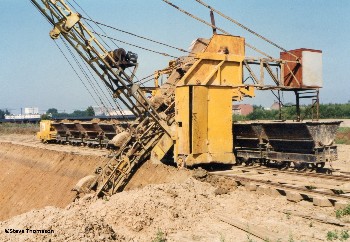
Date: August 1996
Date: August 1996
Date: August 1996
Around the locality of Lille, this firm operated three 600mm narrow gauge railways for the transport of clay. The brickworks at Leers was operated on a seasonal basis, and was only in production throughout the summer months. In 1996, 4 locos were present on the site, of which only 2 were in working order.
Although 2 of the locos had been rebuilt and were rather lacking in character, two locos were still in near original condition. One was not in use and one was found under the the drying sheds, raised on blocks. All the locomotives here were built by Whitcomb.
The clay pit was situated alongside the brickworks, and so the actual running line was less than 0.25km long. A second abandoned clay pit at the back of the works still had track to it and was used but only for dumping waste bricks.
